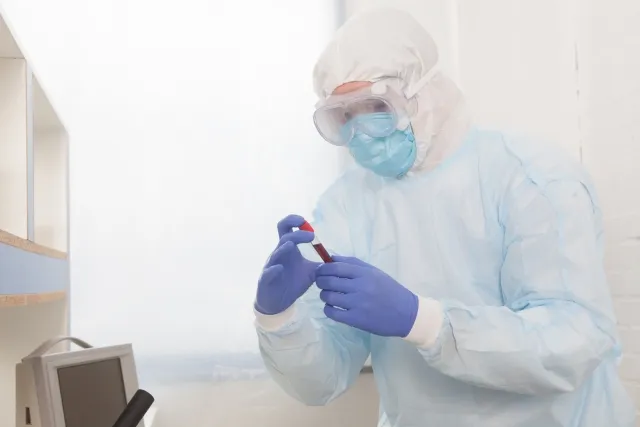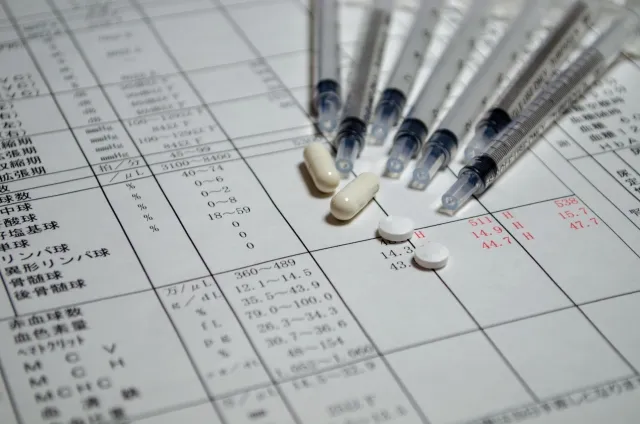Summary of this article
For people concerned about cancer risk, early detection and appropriate diagnosis are extremely important. CTC (circulating tumor cell) testing is gaining attention as a technology that can aid in the early detection of cancer and monitoring of treatment efficacy. This article provides a detailed explanation of the specific methods of CTC testing. It offers information on advances in detection technology and clinical applications, and introduces the latest trends in cancer diagnosis.
What is CTC?
CTC (Circulating Tumor Cells) refers to tumor cells present in the blood of cancer patients. While cancer cells typically remain in specific areas of the body, some may enter the bloodstream and spread throughout the body. These circulating tumor cells serve as important indicators of metastatic cancer progression.
Purpose of CTC Testing
- Early Detection and Diagnosis: By detecting CTCs in the blood, the presence of cancer can be quickly confirmed, allowing for early treatment to be initiated.
- Monitoring Treatment Effectiveness: Monitoring the number and characteristics of CTCs helps assess the effectiveness of treatment and adjust treatment plans accordingly.
- Predicting Recurrence and Metastasis: Detecting CTCs enables early identification of signs of cancer recurrence or metastasis, allowing for prompt action.
Methods of CTC Testing
There are several methods for detecting CTCs, each using unique technologies. Here are some representative methods:
1. Immunocapture Method
Overview
Immunocapture uses antibodies against specific proteins (antigens) on the surface of CTCs to capture them. This method is highly specific and accurately detects certain cancer cells.
Procedure
- Antibody Selection: Select monoclonal antibodies that target surface antigens of specific cancer cells.
- Processing Blood Samples: Process blood samples from the patient to remove unwanted components such as red and white blood cells.
- Adding Antibodies: Add selected antibodies to the blood sample to capture CTCs.
- Detection: Detect CTCs bound to antibodies using fluorescent or colorimetric labels.
Advantages and Disadvantages
- Advantages: High specificity and sensitivity, accurately detects specific cancer cells.
- Disadvantages: May miss CTCs lacking the targeted antigens; limited in detecting diverse cancer cells.
2. Microfluidic Method
Overview
The microfluidic method involves flowing blood samples through microchannels to separate CTCs based on their physical properties (size and shape). It allows for high-speed and high-precision separation and detection of CTCs.
Procedure
- Preparing Blood Samples: Introduce blood samples from the patient into a microchannel device.
- Fluidic Separation: Flow the blood through microchannels to separate CTCs based on size and shape differences.
- Collecting CTCs: Collect separated CTCs for further analysis.
Advantages and Disadvantages
- Advantages: Fast and non-invasive; can detect a variety of cancer cells.
- Disadvantages: Complex device design and operation; requires technical expertise.
3. Genetic Analysis Method
Overview
The genetic analysis method involves analyzing the DNA of CTCs to identify cancer cell characteristics and mutations. Next-generation sequencing (NGS) provides detailed information on genetic mutations and drug resistance.
Procedure
- Processing Blood Samples: Process blood samples from the patient to isolate CTCs.
- DNA Extraction: Extract DNA from isolated CTCs.
- Sequencing: Analyze extracted DNA using next-generation sequencing to identify genetic mutations and drug resistance.
Advantages and Disadvantages
- Advantages: Provides detailed information on genetic characteristics and drug resistance; supports personalized medicine.
- Disadvantages: High cost; requires advanced technology and equipment.
4. Flow Cytometry
Overview
Flow cytometry measures the physical and chemical characteristics of cells and can rapidly and accurately analyze cells in the blood, including CTCs. It is suitable for processing many samples in a short time.
Procedure
- Preparing Blood Samples: Process blood samples from the patient to separate cells containing CTCs.
- Fluorescent Labeling: Add fluorescently labeled antibodies targeting CTC surface antigens.
- Flow Cytometry Analysis: Analyze and detect fluorescently labeled CTCs using a flow cytometer.
Advantages and Disadvantages
- Advantages: High throughput; can analyze many samples quickly.
- Disadvantages: Requires expensive equipment and specialized techniques; may have limitations in detection sensitivity.

Clinical Applications of CTC Testing
1. Early Detection and Diagnosis
CTC testing holds significant potential for early cancer detection. Detecting CTCs in blood tests allows for quick confirmation of cancer and initiation of early treatment, making it a crucial tool for high-risk or regularly monitored patients.
2. Monitoring Treatment Effectiveness
By monitoring changes in CTC numbers and characteristics before and during treatment, the effectiveness of treatment can be evaluated in real-time, aiding in treatment plan adjustments.
3. Predicting Recurrence and Metastasis
CTC testing is useful for predicting cancer recurrence or metastasis. Post-treatment CTC tests can identify early signs of recurrence or metastasis, enabling prompt responses and improving patient prognosis.
4. Advancing Personalized Medicine
Analyzing CTCs provides information on genetic features and drug resistance, enabling personalized medicine approaches. This helps tailor treatments to individual patients, optimizing effectiveness and minimizing side effects.
Conclusion
CTC (Circulating Tumor Cell) testing plays a crucial role in the early detection of cancer and monitoring treatment effectiveness. Various detection methods, such as immunocapture, microfluidic technology, genetic analysis, and flow cytometry, each offer unique advantages.
Advancements in CTC testing technology have significantly improved the precision and efficiency of cancer diagnosis and treatment. Continued progress in standardization and technology is expected to further enhance contributions to cancer treatment. For those concerned about cancer risk, CTC testing remains an important tool for health management.
CTC Testing at Hiro Clinic
At Hiro Clinic, we offer cutting-edge CTC testing. By detecting Circulating Tumor Cells (CTCs) in the blood, we support the early detection of cancer and the monitoring of treatment effectiveness. This non-invasive blood test is characterized by minimal patient burden. With the latest technology and expertise, we provide reassurance and reliable medical services to those concerned about cancer risks.
Supervisor of the article

Dr. Hiroshi Oka
Graduated from Keio University, Faculty of Medicine
Doctor of Medicine
Medical Doctor



